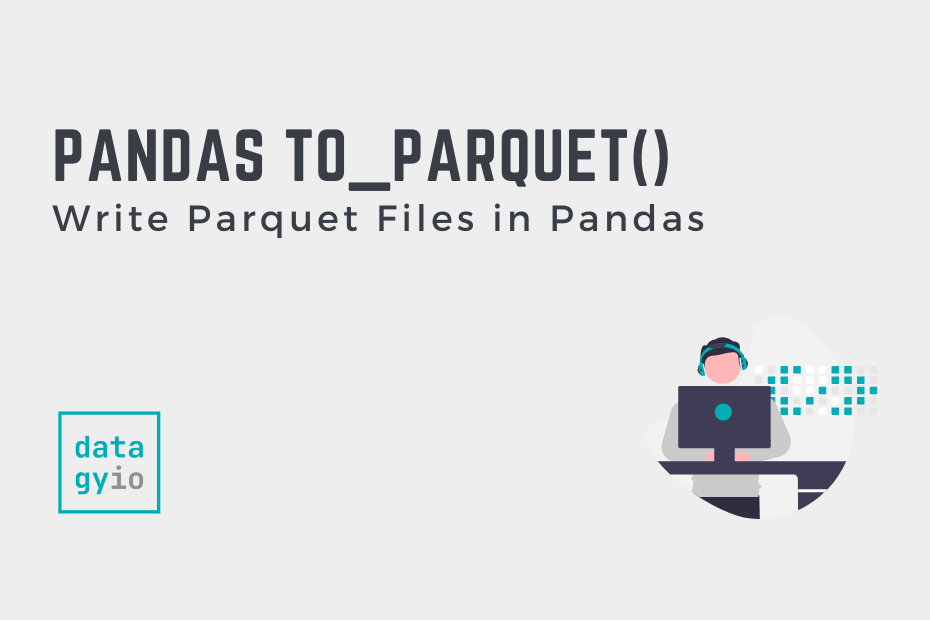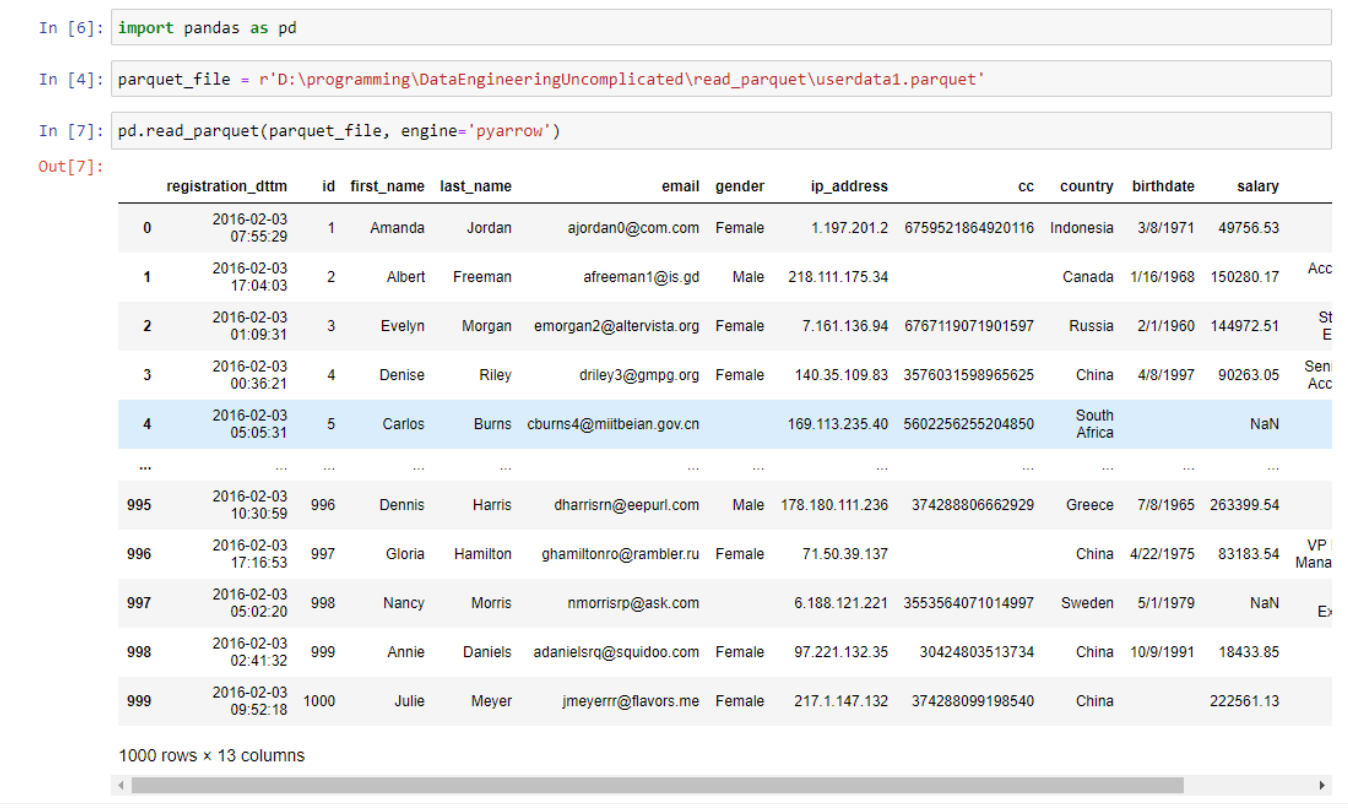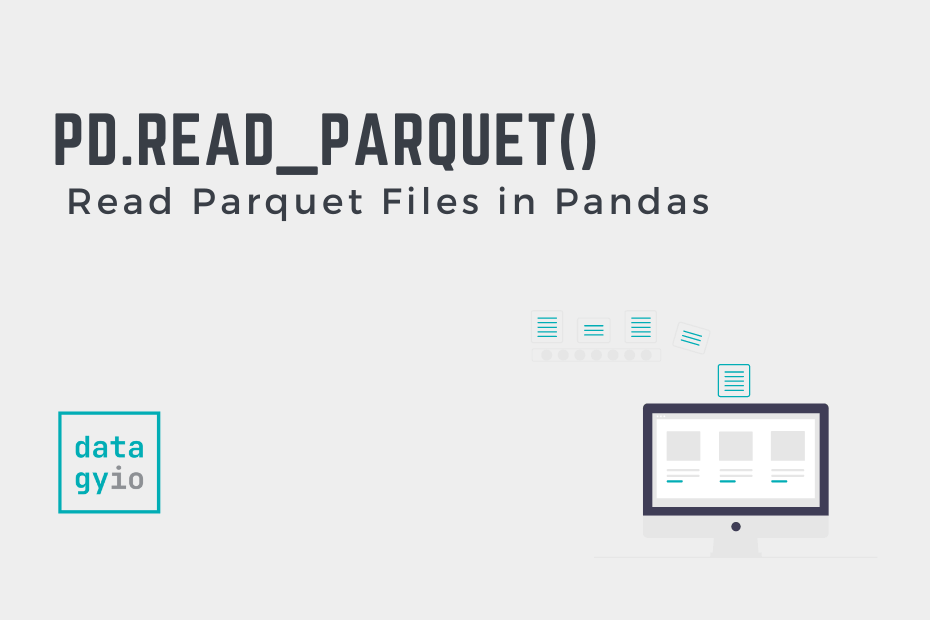Pandas Read Parquet File
Pandas Read Parquet File - Web 4 answers sorted by: Web pandas.read_parquet(path, engine='auto', columns=none, storage_options=none, use_nullable_dtypes=_nodefault.no_default, dtype_backend=_nodefault.no_default, **kwargs) [source] #. # import the pandas library as pd. Pandas.read_parquet(path, engine='auto', columns=none, storage_options=none, use_nullable_dtypes=false, **kwargs) parameter path: 12 hi you could use pandas and read parquet from stream. There's a nice python api and a sql function to import parquet files: Data = pd.read_parquet(data.parquet) # display. Web in this test, duckdb, polars, and pandas (using chunks) were able to convert csv files to parquet. Result = [] data = pd.read_parquet(file) for index in data.index: I have a python script that:
Web 4 answers sorted by: See the user guide for more details. None index column of table in spark. Parameters pathstr, path object, file. We also provided several examples of how to read and filter partitioned parquet files. Web the read_parquet method is used to load a parquet file to a data frame. You can read a subset of columns in the file. Pandas.read_parquet(path, engine='auto', columns=none, storage_options=none, use_nullable_dtypes=false, **kwargs) parameter path: Load a parquet object from the file. It's an embedded rdbms similar to sqlite but with olap in mind.
You can choose different parquet backends, and have the option of compression. Index_colstr or list of str, optional, default: 12 hi you could use pandas and read parquet from stream. Web this is what will be used in the examples. # get the date data file. Web this function writes the dataframe as a parquet file. Pandas.read_parquet(path, engine='auto', columns=none, storage_options=none, use_nullable_dtypes=false, **kwargs) parameter path: Web pandas.read_parquet(path, engine='auto', columns=none, storage_options=none, use_nullable_dtypes=_nodefault.no_default, dtype_backend=_nodefault.no_default, filesystem=none, filters=none, **kwargs) [source] #. # import the pandas library as pd. Using pandas’ read_parquet() function and using pyarrow’s parquetdataset class.
Add filters parameter to pandas.read_parquet() to enable PyArrow
You can use duckdb for this. You can choose different parquet backends, and have the option of compression. Data = pd.read_parquet(data.parquet) # display. This file is less than 10 mb. Web reading parquet to pandas filenotfounderror ask question asked 1 year, 2 months ago modified 1 year, 2 months ago viewed 2k times 2 i have code as below and.
Pandas Read Parquet File into DataFrame? Let's Explain
Parameters pathstring file path columnslist, default=none if not none, only these columns will be read from the file. Web pandas.read_parquet(path, engine='auto', columns=none, storage_options=none, use_nullable_dtypes=_nodefault.no_default, dtype_backend=_nodefault.no_default, **kwargs) [source] #. Using pandas’ read_parquet() function and using pyarrow’s parquetdataset class. Web 5 i am brand new to pandas and the parquet file type. 12 hi you could use pandas and read parquet from.
[Solved] Python save pandas data frame to parquet file 9to5Answer
Web 5 i am brand new to pandas and the parquet file type. Web 1.install package pin install pandas pyarrow. It colud be very helpful for small data set, sprak session is not required here. Web load a parquet object from the file path, returning a dataframe. Reads in a hdfs parquet file converts it to a pandas dataframe loops.
pd.to_parquet Write Parquet Files in Pandas • datagy
# get the date data file. It could be the fastest way especially for. Parameters pathstring file path columnslist, default=none if not none, only these columns will be read from the file. Syntax here’s the syntax for this: It's an embedded rdbms similar to sqlite but with olap in mind.
How to read (view) Parquet file ? SuperOutlier
To get and locally cache the data files, the following simple code can be run: Load a parquet object from the file. None index column of table in spark. Web 5 i am brand new to pandas and the parquet file type. Import duckdb conn = duckdb.connect (:memory:) # or a file name to persist the db # keep in.
Pandas Read File How to Read File Using Various Methods in Pandas?
Web this function writes the dataframe as a parquet file. Web pandas.read_parquet¶ pandas.read_parquet (path, engine = 'auto', columns = none, ** kwargs) [source] ¶ load a parquet object from the file path, returning a dataframe. Polars was one of the fastest tools for converting data, and duckdb had low memory usage. Result = [] data = pd.read_parquet(file) for index in.
Python Dictionary Everything You Need to Know
Parameters pathstr, path object, file. Web 4 answers sorted by: None index column of table in spark. Refer to what is pandas in python to learn more about pandas. Web pandas.read_parquet(path, engine='auto', columns=none, storage_options=none, use_nullable_dtypes=_nodefault.no_default, dtype_backend=_nodefault.no_default, filesystem=none, filters=none, **kwargs) [source] #.
Why you should use Parquet files with Pandas by Tirthajyoti Sarkar
Web this function writes the dataframe as a parquet file. Refer to what is pandas in python to learn more about pandas. Web pandas.read_parquet(path, engine='auto', columns=none, storage_options=none, use_nullable_dtypes=_nodefault.no_default, dtype_backend=_nodefault.no_default, filesystem=none, filters=none, **kwargs) [source] #. Web reading the file with an alternative utility, such as the pyarrow.parquet.parquetdataset, and then convert that to pandas (i did not test this code). Data =.
How to read (view) Parquet file ? SuperOutlier
Web the read_parquet method is used to load a parquet file to a data frame. Parameters path str, path object or file. It reads as a spark dataframe april_data = sc.read.parquet ('somepath/data.parquet… Load a parquet object from the file. # import the pandas library as pd.
pd.read_parquet Read Parquet Files in Pandas • datagy
To get and locally cache the data files, the following simple code can be run: Parameters pathstr, path object, file. Web 1.install package pin install pandas pyarrow. Web reading parquet to pandas filenotfounderror ask question asked 1 year, 2 months ago modified 1 year, 2 months ago viewed 2k times 2 i have code as below and it runs fine..
To Get And Locally Cache The Data Files, The Following Simple Code Can Be Run:
There's a nice python api and a sql function to import parquet files: Web df = pd.read_parquet('path/to/parquet/file', columns=['col1', 'col2']) if you want to read only a subset of the rows in the parquet file, you can use the skiprows and nrows parameters. Import duckdb conn = duckdb.connect (:memory:) # or a file name to persist the db # keep in mind this doesn't support partitioned datasets, # so you can only read. Web this function writes the dataframe as a parquet file.
Web Pandas.read_Parquet¶ Pandas.read_Parquet (Path, Engine = 'Auto', Columns = None, ** Kwargs) [Source] ¶ Load A Parquet Object From The File Path, Returning A Dataframe.
Data = pd.read_parquet(data.parquet) # display. Refer to what is pandas in python to learn more about pandas. Parameters path str, path object or file. Parameters pathstring file path columnslist, default=none if not none, only these columns will be read from the file.
You Can Read A Subset Of Columns In The File.
Load a parquet object from the file. Polars was one of the fastest tools for converting data, and duckdb had low memory usage. Load a parquet object from the file path, returning a geodataframe. Syntax here’s the syntax for this:
Pandas.read_Parquet(Path, Engine='Auto', Columns=None, Storage_Options=None, Use_Nullable_Dtypes=False, **Kwargs) Parameter Path:
Web pandas.read_parquet(path, engine='auto', columns=none, storage_options=none, use_nullable_dtypes=_nodefault.no_default, dtype_backend=_nodefault.no_default, filesystem=none, filters=none, **kwargs) [source] #. # import the pandas library as pd. Parameters pathstr, path object, file. Reads in a hdfs parquet file converts it to a pandas dataframe loops through specific columns and changes some values writes the dataframe back to a parquet file then the parquet file.







